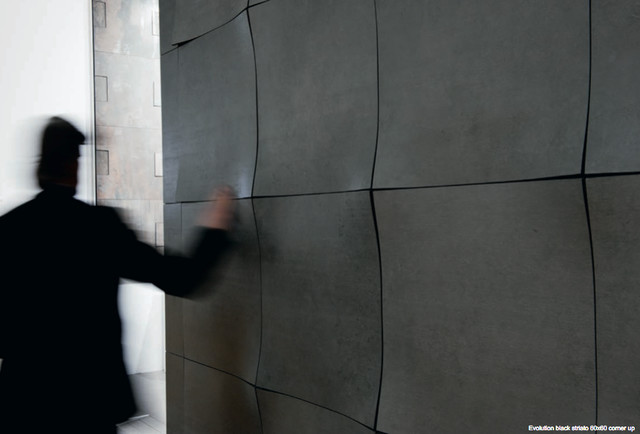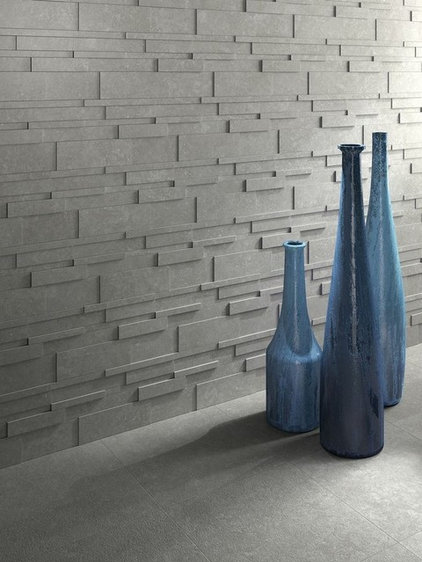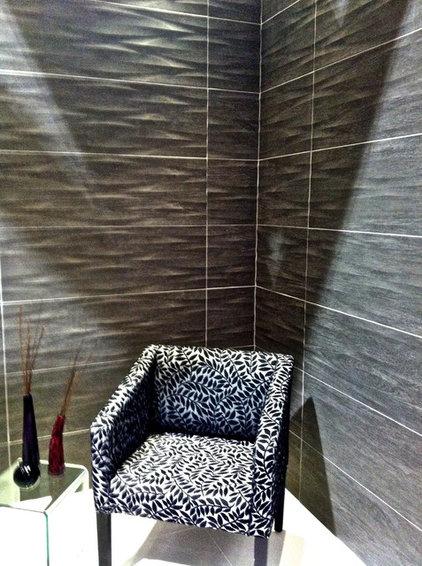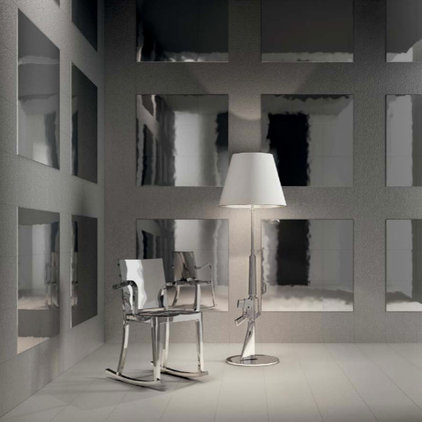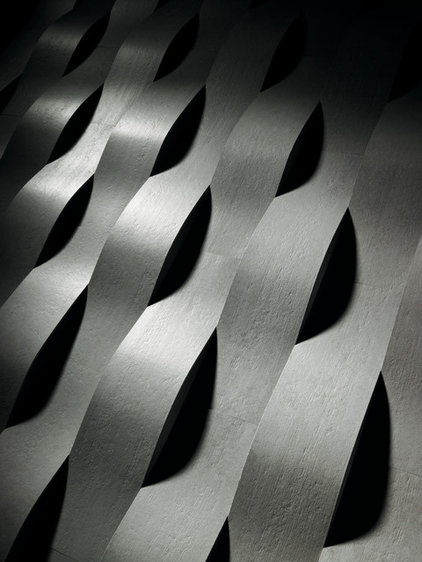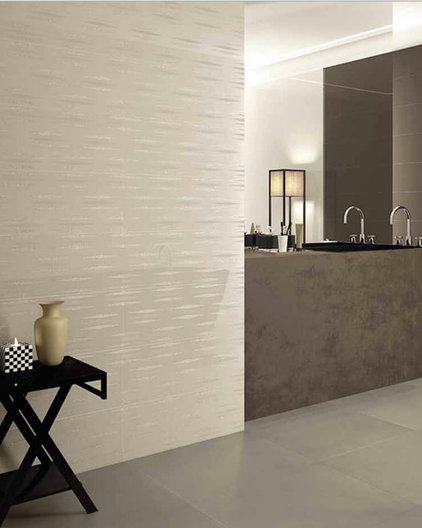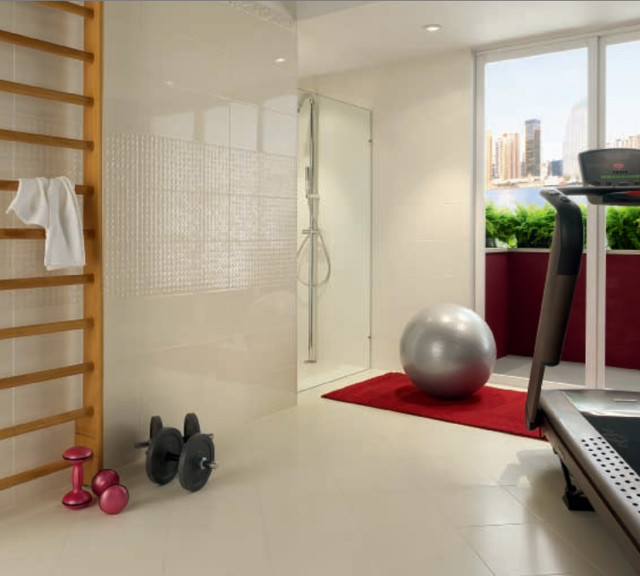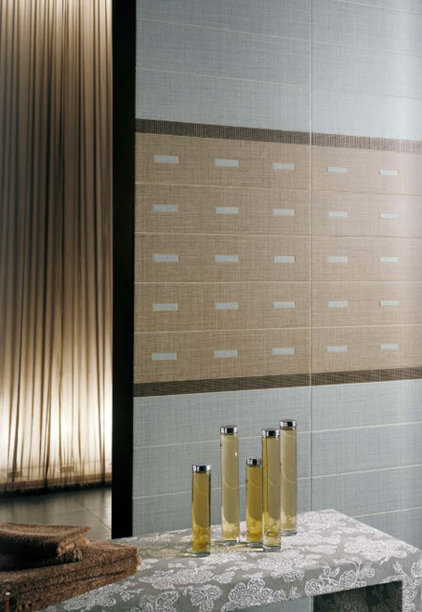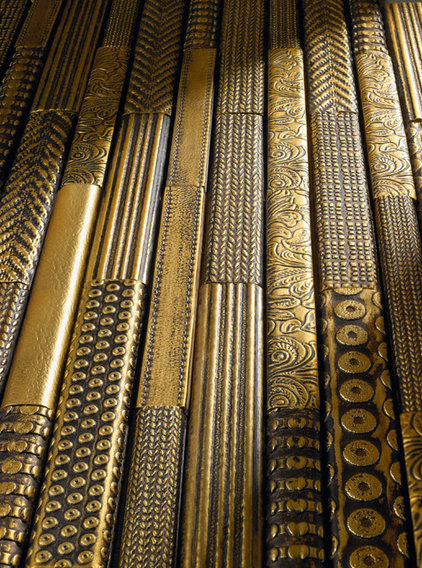Shape Up Your Surfaces With New Tile Textures and Forms
|
|
|
Patterns with large-scale shapes.
Separate tiles work together here, meeting at the corners to create new
shapes; it's like the wall was a large crumpled-up piece of paper
that's been somewhat smoothed out.
Shown: Apavisa |
Shown: Archistone by Ceradisa
Shown: Lamosa
|
|
|
Here is said Starck joint: The
glossy part and the lower rough part are on the same tile, so there are
two different depths on one square tile. There are different tile
options (some are just the rough part, some have rough edges around all
four raised sides, some have two rough edges, some have one rough edge
etc.) and interesting ideas for configuring these tiles that you can
check out in the catalog. I promise the pictures explain it much better than my words do, and the concept is really brilliant and simple!
|
|
|
|
Seriously sculptural. The Archconcept Collection by Apavisa
takes 3-D tiles to a whole new dimension. These tiles and the tiles
below are anything but flat. They have the power to completely transform
interior architecture. And no, I don't have any idea how to clean
these!
|
|
|
|
Hieroglyphic style. This tile and the one below are both from Egypt. They look like they're straight out of an archaeological dig.
|
|
|
|
|
|
|
|
|
|
|
|
Small-scale 3-D tiles. Tiny tiles are in on the pattern game too; here the small tiles give the wall depth and interest in a mosaic pattern.
Shown: Abita by Sant'Agostino |
|
|
|
Fabric-inspired textures. Patterns like damask are also appearing in relief on tiles.
Shown: Interceramic |
|
|
|
|
|
|
|
|
|
|
|
Small beads in wavy patterns draw the eye here. Ornamental pieces like these are like jewelry for walls.
|
